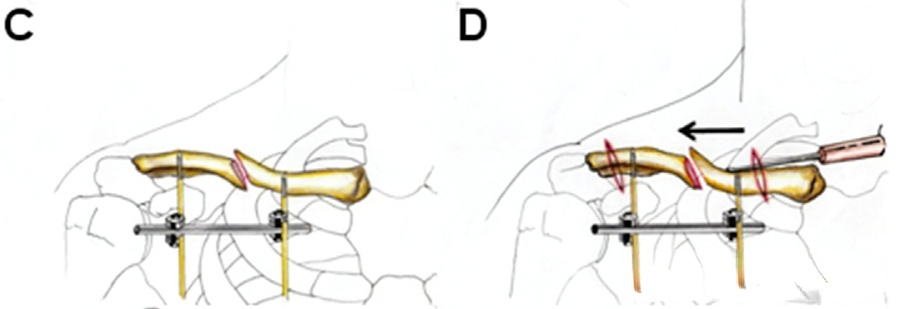Clavicle #fractures are commonly caused by lateral #shoulder violence or violence transmitted from the upper limbs. Although most textbooks believe that clavicle fractures can be treated conservatively and malunion does not affect shoulder function, due to the poor patient experience of conservative clavicle treatment and long immobilization time, symptomatic clavicle shortening or malunion still exists. Surgical treatment with strong fixation and early functional exercise are recommended by clinicians.

MIPPO technology is more common in the internal fixation of long bone fractures. The incision of open reduction surgery for clavicle fracture is long. For this reason, some scholars have proposed the “Joystick technology” to assist reduction and minimally invasive internal fixation to treat clavicle fractures, and achieved good results.

Surgical procedures
Step 1: The patient’s position and the C-arm machine are the same as those for conventional open reduction, beach chair position, and the upper limbs need to be disinfected and bandaged to facilitate intraoperative operations.

Step 2: Minimally invasive percutaneous surgery with assisted reduction.
Through the proximal and distal clavicle fracture #fragments, insert from the anterior and inferior part of the clavicle to avoid damaging blood vessels and nerves and affecting the placement of the steel plate.

Using the Steinmann wire as a rocker, manual reduction was performed. Under fluoroscopic monitoring, after satisfactory reduction, the two Steinmann wires were fixed with connecting rods and connectors to form a small external fixator.

Minimally invasive incisions were made at the distal and proximal ends of the fracture, and plates and screws were inserted. After fixation, the Steinmann wires were removed.


Typical case diagram is as follows:


Minimally invasive reduction and fixation of #clavicle fractures are common in clinical practice, especially for young women. Before minimally invasive plate placement, auxiliary reduction and maintenance of reduction mainly rely on clamping of both ends of the fracture or percutaneous Kirschner wire fixation of the fracture ends. The method described in this article requires Steinmann wire fixation to form a small external fixator, which may be difficult in the domestic clinical environment. The method described in this article is for reference by clinicians.
[Statement]: The concepts, technologies, and principles shared on this platform are all publicly available journals, published books, or online platform materials. The copyright belongs to the original author. The platform only organizes, summarizes, and shares them for learning reference. This platform is not responsible for the authenticity of the content and the effectiveness of the technology. The related medical behaviors generated based on the content pushed by this platform have nothing to do with the platform. Please choose carefully. If there is any infringement, please contact us to delete it.
Welcome to share, forward and like the article in the lower right corner!




